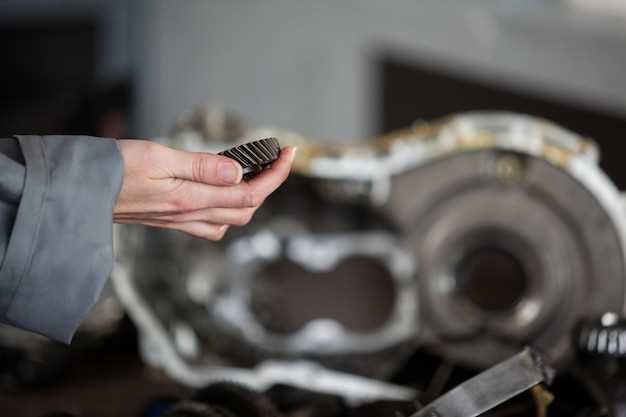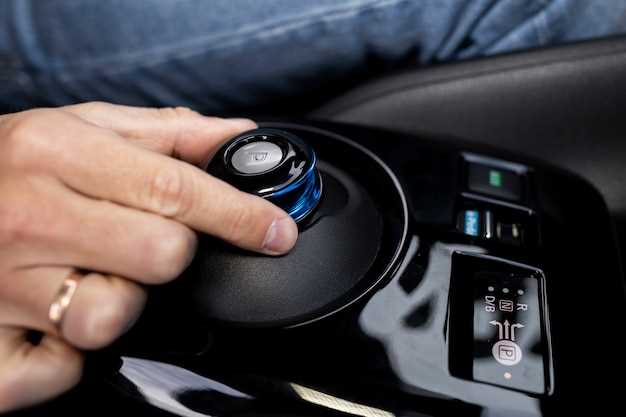The Role of the Clutch in Manual Vehicles

In the realm of manual transmission vehicles, the clutch serves a crucial role in the operation of the drivetrain. It acts as a mechanical interface between the engine and the transmission, allowing for the smooth shift of gears without causing damage to the vehicle’s components. Understanding how the clutch functions not only enhances the driving experience but also emphasizes the importance of maintaining this vital part of the vehicle.
The primary purpose of the clutch is to disengage the engine from the transmission during gear shifts. When the driver depresses the clutch pedal, the connection between the two is temporarily broken, enabling a seamless transition between gears. This mechanism is essential for ensuring that the engine can continue to run while the vehicle is at a standstill or when switching to a different gear, thus preventing stalling and facilitating smoother acceleration.
Additionally, the clutch’s design allows for modulation of power delivery to the wheels. By varying the pressure applied to the clutch pedal, drivers can control the engagement and disengagement process, which ultimately affects vehicle performance. A well-functioning clutch not only contributes to a more enjoyable driving experience but also plays a pivotal role in the longevity of the transmission system.
Understanding the Clutch Pedal Mechanics

The clutch pedal is a crucial component in manual transmission vehicles, acting as the interface between the engine and the transmission. When the driver presses the clutch pedal, it disengages the clutch, allowing for a smooth shift between gears. This mechanical action is vital for changing gears without causing damage to the transmission system.
The clutch pedal operates a series of components known as the hydraulic or cable linkage, which communicates the driver’s input to the clutch assembly. In hydraulic systems, pressing the pedal compresses a fluid, sending pressure to the slave cylinder. This action moves the release bearing, disengaging the clutch plate from the flywheel. In cable systems, the pedal pulls a cable that directly operates the release mechanism.
Understanding this mechanism is essential for drivers of manual vehicles, as it affects their ability to shift gears effectively. A malfunctioning clutch pedal can result in difficulties while shifting, leading to grinding of gears or premature wear of the transmission components. Regular maintenance and awareness of the pedal’s functionality can enhance driving experience and prolong the life of the vehicle.
Additionally, the clutch pedal’s position and responsiveness can influence the overall driving dynamics. Beginners often struggle with the coordination between the clutch pedal, accelerator, and gear lever, making practice critical for mastering manual driving. Familiarity with the mechanics of the clutch pedal helps drivers develop a smoother and more controlled driving style.
Common Clutch Issues and Their Symptoms
Clutch problems can lead to difficulties in shifting gears and can significantly affect the performance of manual transmission vehicles. Identifying the symptoms early can prevent more severe damage and costly repairs.
One common issue is clutch slippage, which occurs when the engine revs higher without a corresponding increase in vehicle speed. This may happen due to worn clutch plates or a malfunctioning pressure plate. Drivers may notice this when attempting to accelerate, as the car struggles to gain speed despite increased engine RPM.
Another issue is a sticking clutch pedal, which can indicate a problem with the clutch release mechanism. If the pedal feels stuck or requires excessive effort to shift, it may signify that the hydraulic system is compromised, or the clutch cable is frayed or broken. This can lead to difficulty engaging or disengaging the clutch smoothly.
Additionally, abnormal noises while shifting can signal clutch wear. A grinding or crunching sound, particularly during shifts, may suggest that the clutch is not fully disengaging. This can result from insufficient lubrication or damage to the clutch components, impeding a seamless transition between gears.
Moreover, a vibrating or shaking clutch pedal can indicate misalignment or worn components. It may also be a sign of a failing throw-out bearing. Drivers experiencing these vibrations should not ignore the symptom, as it can lead to further complications and increased repair costs.
Finally, fluid leaks around the clutch area should always be investigated. This could point to a leak in the hydraulic system, affecting the clutch’s ability to disengage properly. If fluid is pooling under the vehicle, it’s imperative to address the issue immediately to avoid complete clutch failure.
Tips for Smooth Gear Shifting with the Clutch

To achieve smooth gear shifting in manual transmission vehicles, proper use of the clutch is essential. Here are several tips to enhance your shifting experience:
- Depress the Clutch Fully: Always push the clutch pedal down completely before shifting gears. This action disconnects the engine from the transmission, allowing for smoother engagement of the gears.
- Shift at the Right RPM: Pay attention to the engine’s revolutions per minute (RPM). Shifting too early may cause the engine to struggle, while shifting too late can lead to a harsh transition. Find the optimal RPM range for smooth shifts.
- Use the Gear Selector Fluidly: When moving the gear stick, make deliberate, smooth motions. Avoid forcing the gear lever into place; instead, feel for the correct position to ensure that the gears engage without grinding.
- Balance the Clutch and Accelerator: When starting from a stop or shifting to a higher gear, gradually release the clutch while simultaneously pressing the accelerator. This coordinated action minimizes jerking and enhances vehicle stability.
- Avoid Riding the Clutch: Do not keep your foot on the clutch pedal when not shifting. This practice, known as “riding the clutch,” can lead to premature wear and make shifting less smooth.
- Practice Rev Matching: Rev matching involves adjusting the engine speed to match the transmission speed during downshifts. By briefly increasing the throttle before engaging a lower gear, you can achieve smoother transitions and reduce strain on the drivetrain.
- Stay Calm and Focused: Maintaining a calm demeanor while driving helps to ensure that your actions are deliberate and controlled. This poise is crucial for mastering the timing and technique needed for smooth gear shifts.
Implementing these tips will significantly improve your manual shifting skills and lead to a more enjoyable driving experience.

